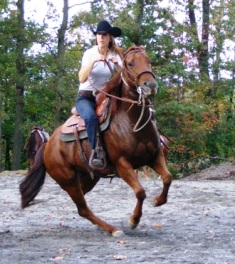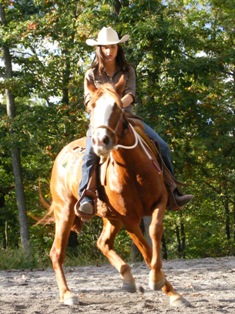 Have you ever seen a pull-toy? I think we all have and likely remember them from our childhood. They are usually very simple, make some noise or are somewhat flashy by design and can be quite captivating to watch.  When I was a child I remember playing with these and my overstuffed animals for hours but I also remember just sort of dragging them along mindlessly while focused on other tasks. It was easy to cling to them and still move about.
Have you ever seen a pull-toy? I think we all have and likely remember them from our childhood. They are usually very simple, make some noise or are somewhat flashy by design and can be quite captivating to watch.  When I was a child I remember playing with these and my overstuffed animals for hours but I also remember just sort of dragging them along mindlessly while focused on other tasks. It was easy to cling to them and still move about.
I’ve come to realize that too many people view horses as “pull-toys”. And too many people have problems because of it. They erroneously learn to rely on their hands instead of their seat and legs to ride and as a result instill many problems into their horses. One of my biggest mentors, Ron Johnson, always told me, horses are not pull-toys, they’re “push-toys”. What he means by that is that you don’t pull horses where you want them to go, you must always push them there. Drive them there with your seat and legs, using your hands only as a guide. This is tried and true horsemanship theory and has truly been one of the best pieces of advice ever given to me in training. This simple concept has pervaded every aspect of our training program and has perfected the techniques we use to teach beginning to advanced maneuvers. And, I’m always amazed at how easy it has made it for the horses to understand what we’re trying to teach them.
 It’s a language horses understand, it is familiar to them because it’s how they communicate with each other. Horses don’t pull each other around, they push each other around.  They “get” that. If we use more of that language in our training program and less of the pull-toy concept we will be much more highly effective as riders and in solving training issues.
It’s a language horses understand, it is familiar to them because it’s how they communicate with each other. Horses don’t pull each other around, they push each other around.  They “get” that. If we use more of that language in our training program and less of the pull-toy concept we will be much more highly effective as riders and in solving training issues.
Don’t get into the mindless habit of relying on your hands to make your horse do something. Instead, lightly set your hands as a guide through the reins and push your horse up into that contact. If he fights you, stay soft with your hands and drive harder. You’ll begin to feel him accept the contact and guide from your hands as he moves forward with cadence and confidence.
We can fix so many “problems” with horses in just a short time by implementing the push-toy philosophy. Contact, collection, slowing down, stops, turns, you name it the push-toy concept applies to all maneuvers in any discipline and it starts in the very first ride. It’s how people can ride their horses bridleless; how eventers master their course and reiners score a plus 1.5 in their spins. It’s how dressage riders transition from the canter or trot to the piaffe – they don’t pull their horses there, they push them forward into a hold defined by feel.
I’m always excited to see the change in people that come to our clinics when they begin to implement the push-toy concept on their horses. They can’t believe the difference it makes in the way their horses respond and how it fixes specific problems they’ve been having. And, the best part about it – it’s never too late to introduce it to your horse. Give it a try – believe me he’ll be grateful you did because he’ll finally “get” what you’re asking him to do.
